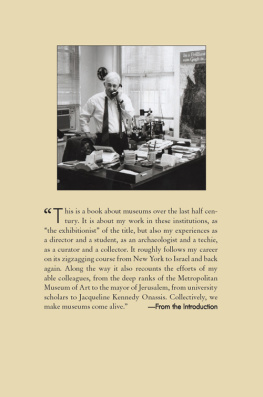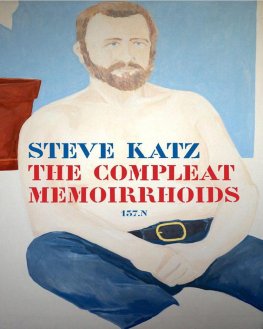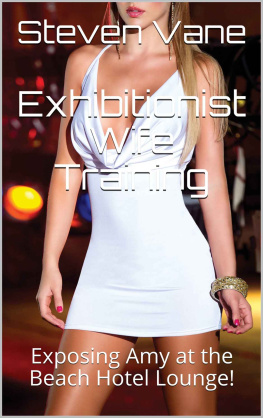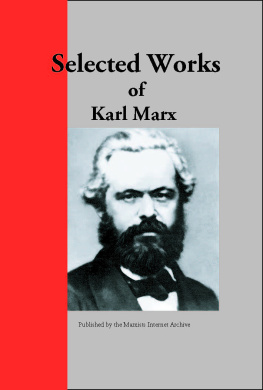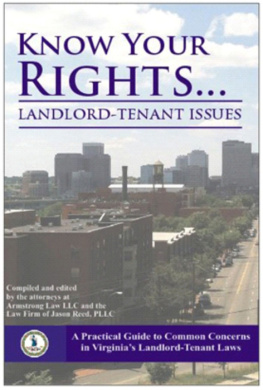Karl Katz - The Exhibitionist
Here you can read online Karl Katz - The Exhibitionist full text of the book (entire story) in english for free. Download pdf and epub, get meaning, cover and reviews about this ebook. year: 2016, publisher: ABRAMS (Ignition), genre: Non-fiction. Description of the work, (preface) as well as reviews are available. Best literature library LitArk.com created for fans of good reading and offers a wide selection of genres:
Romance novel
Science fiction
Adventure
Detective
Science
History
Home and family
Prose
Art
Politics
Computer
Non-fiction
Religion
Business
Children
Humor
Choose a favorite category and find really read worthwhile books. Enjoy immersion in the world of imagination, feel the emotions of the characters or learn something new for yourself, make an fascinating discovery.
- Book:The Exhibitionist
- Author:
- Publisher:ABRAMS (Ignition)
- Genre:
- Year:2016
- Rating:3 / 5
- Favourites:Add to favourites
- Your mark:
- 60
- 1
- 2
- 3
- 4
- 5
The Exhibitionist: summary, description and annotation
We offer to read an annotation, description, summary or preface (depends on what the author of the book "The Exhibitionist" wrote himself). If you haven't found the necessary information about the book — write in the comments, we will try to find it.
The Exhibitionist — read online for free the complete book (whole text) full work
Below is the text of the book, divided by pages. System saving the place of the last page read, allows you to conveniently read the book "The Exhibitionist" online for free, without having to search again every time where you left off. Put a bookmark, and you can go to the page where you finished reading at any time.
Font size:
Interval:
Bookmark:
This edition first published in hardcover in the United States in 2016
by The Overlook Press, Peter Mayer Publishers, Inc.
141 Wooster Street
New York, NY 10012
www.overlookpress.com
For bulk and special sales, please contact ,
or write us at the address above.
Copyright 2016 by Karl Katz
All rights reserved. No part of this publication may be reproduced or transmitted in any form or by any means, electronic or mechanical, including photocopy, recording, or any information storage and retrieval system now known or to be invented, without permission in writing from the publisher, except by a reviewer who wishes to quote brief passages in connection with a review written for inclusion in a magazine, newspaper, or broadcast.
PHOTO CREDITS: p. 124 by Ardon Bar-Hama, courtesy of The Israel Museum, Jerusalem; p. 131, courtesy of The Israel Museum, Jerusalem; p. 199 by David Harris, courtesy of The Israel Museum, Jerusalem; p. 203 by Elie Posner, courtesy of The Israel Museum, Jerusalem; p. 271 by Harry Shunk, courtesy of Shunk-Kender J. Paul Getty Trust. Getty Research Institute, Los Angeles; p. 284 by Amyas Naegele, courtesy of Jerome and Ellen Stern; p. 290 courtesy of Marc Morrel; p. 314 by Lee Boltin, courtesy of the Metropolitan Museum of Art; p. 378, courtesy of Courtesy of The International Center for Photography International Center of Photography; p. 402, 425 courtesy of MUSE; p. 414 courtesy of the Metropolitan Museum of Art; p. 449, 450 courtesy of Beit Hatfutsot/American Friends of Beit Hatfutsot; p. 452 by Baruch Rimon, courtesy of The Israel Museum, Jerusalem; p. 468 by John T. Hill, courtesy of Keith Godard/StudioWorks All other images courtesy of Karl Katz.
ISBN: 978-1-4683-1348-2
Living Museums, Loving Museums
KARL KATZ
with 28 black & white photographs
A t once a field guide on how to appreciate museumsand the art within its wallsand an ebullient and entertaining memoir, The Exhibitionist by renowned museum director Karl Katz tells how he endeavored to make museums inviting, educational, and vibrant. Katz was instrumental in creating The Israel Museum, The International Center of Photography (ICP), The Diaspora Museum, and The Barnum Museum. Along the way he recounts some of his adventures: how he uncovered an ancient mosaic floor in the newly-founded state of Israel, how he entered anti-Semitic Egypt of the late 1950s using forged documents, and how he made friends and influenced people in New York City of the 60s and 70s. Katz shows readers how Biblical archaeology played a crucial role in the cause of Israels nationhood, while also recounting his time trying to bring broadcast television and home-video technology to museums in the 1980s.
A man who has always stood up for the museum visitor, Katz walks readers through a brilliant and accomplished life. A book for art critics, designers of museums, collectors, curators, administrators, and students, The Exhibitionist is filled with a wide range of insights both cultural and personal. The Exhibitionist is perfect for anyone who has ever been captivated by a well-curated exhibit.
To G, whose vision transformed museums
W ITH A FRESHLY MINTED STAFF ID HANGING AROUND MY neck, I opened a door marked CLOSED and walked into a museum gallery lit by dangling bare bulbs. The worlds oldest extant pianofortea Florentine creation from 1720sat in the corner. Several Stradivarius violins lay in open cases, their prized necks resting on black velvet. I walked up to two men talking in the middle of the gallery, recognizing the younger of the pair as Stuart Silver, the museums master designer. Stuart, great to see you!
Silver introduced his companion, Emanuel Winternitz. The septuagenarian curator of musical instruments was wearing a broad-shouldered suit and a stiff upper lip. As I shook his hand I looked around the galleries. This is all marvelous.
It was 1971. Silver, Winternitz, and I were standing in the yet-unfinished Musical Instruments galleries of the Metropolitan Museum of Art. They had been a long time in coming.
In the 1890s, Mary Elizabeth Brown donated hundreds of instruments to the museum. For well over half a century, the collectionconsidered one of the top in the world, unsurpassed in its encyclopedic scopehad foundered. With this installation, the extraordinary assemblage was finally receiving its due.
The allotted gallery space spanned a series of rooms that wrapped around the triple-height central hall of the Arms and Armor galleries. Western instruments were to flank one side of the atrium, Eastern and ethnological instruments the other.
I looked up and down from the second-floor balcony. Above me, organ pipes rose toward the vaulted roof. Below, a quartet of mounted knights stood in the center of the Arms and Armor Hall. Dressed to the metallic nines, lances held aloft, they were better prepared for battle than I.
Will we be able to hear the instruments?
Winternitz bristled. Silver looked down at his notes, anxious to continue the design session I had interrupted. The curator cleared his throat. Absolutely not, he declared in a thick Viennese accent.
But shouldnt we give visitors the chance to hear what each magnificent instrument sounds like? They were originally meant for playing, after all.
The curators eyes darkened behind thick-framed glasses and he shook his head. Silver tapped nervously at his clipboard. A museum is a place of egos and territorial rights. My well-intentioned question put me on what Winternitz saw as dangerously invasive ground. Just because I was the museums newest upper administrator, appointed to oversee exhibitions, loans, and special projects, didnt mean I knew what was best for his precious violoncellos. They cant be played just for anything, he told me.
Physically, many of them could be played. Winternitz had spent decades bringing each fragile piece back into playable condition. But the fruits of his painstaking efforts were only rarely appreciated. He hosted a critically acclaimed concert series for museum members, but those engagements were limited by the instruments fragility. My suggestion to play them on a regular basis must have horrified him. The public will enjoy looking at them, and then theyll go home and listen to recordings, he said definitively.
I shrugged. It seemed to me that if we were reimagining the galleries, we should make the most engaging display possible. I just dont think were giving the museum visitor a complete experience, I mumbled. With that, Winternitz stalked away, Silver trailing behind. They resumed their conversation in low tones at the far end of the gallery, arranging and rearranging the brass instruments of an Ottoman Janissary marching band.
I slipped out of the room through an unmarked door, and as I walked back through the museums Italian masterpieces to my new office, I replayed the conversation with Winternitz. I wanted to enhance the museum experience for our visitors. By the time I sat down at my desk, I was determined that the Musical Instrument galleries were where I would begin. I just didnt know how.
I WAS STILL THINKING about that conversation a few weeks later as I walked through another set of galleries, this time at the Louvre in Paris. I was there to discuss an upcoming exhibition, and had decided to stroll the galleries before heading back to my hotel.
As I neared the Mona Lisa, it was not her enigmatic smile that caught my attention but a gentleman standing to her right. He was armed with a half dozen objects that looked like the shafts of tennis rackets. One by one he handed them to passing visitors. After some softly worded explanation, they approached the Leonardo da Vinci masterpiece and each raised a shaft to an ear.
Font size:
Interval:
Bookmark:
Similar books «The Exhibitionist»
Look at similar books to The Exhibitionist. We have selected literature similar in name and meaning in the hope of providing readers with more options to find new, interesting, not yet read works.
Discussion, reviews of the book The Exhibitionist and just readers' own opinions. Leave your comments, write what you think about the work, its meaning or the main characters. Specify what exactly you liked and what you didn't like, and why you think so.

